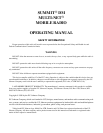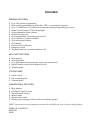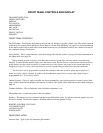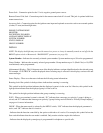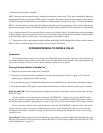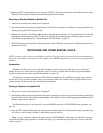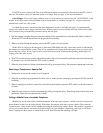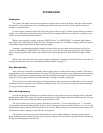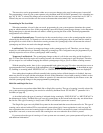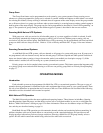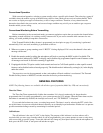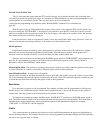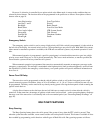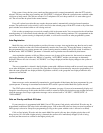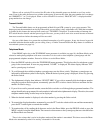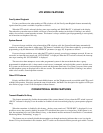
The transceiver can be programmed to either save or not save changes to the scan list when power is turned off.
This programming is done by your system operator or by the Menu mode SCAN SAVE parameter if it is selectable (see
page 18). If “ON” is selected, the changes are saved and the list is the same when power is turned back on. If “OF” is
selected, they are not saved and the scan list reverts to the status that existed when “ON” was last selected.
Transmitting In The Scan Mode
When the transmitter is keyed in the scan mode, programming by your system operator determines the system/
group on which transmissions occur. If this programming causes the selected system/group to change, it also determines
what system/group is selected when the scan mode is exited by pressing the Scan switch. The three programmable
configurations are as follows:
Last Selected System/Group - Transmissions in the scan mode always occur on the system/group that was last
selected by the Select switch. To respond to a call not on the selected system/group, the scan mode must be exited by
pressing the Scan switch. If this is done before scanning resumes, the system/group of the call becomes the selected
system/group and it does not need to be changed manually.
Last Received - The selected system/group changes to the system/group of a call. Therefore, you can always
respond to a call without having to manually change the system/group. This configuration may be programmed if you
normally respond to calls on various system/groups while scanning.
Temporary Last Received - The system/group changes to that of a call for the scan delay period described on
page 23. Then when the delay expires and scanning resumes, the selected system/group is again displayed. Therefore,
you can respond to a call without changing the selected system/group as long as you do so before scanning resumes.
With the preceding modes, there is also a programmable bank option (see page 32) to have transmissions occur on
a preprogrammed fixed system/group if
the transmitter is keyed while scanning is occurring. As described on page
23, scanning is occurring when “MULTI SCAN” or “SNGLE SCAN” and the rotating indicators are displayed.
Since taking the microphone off-hook normally halts scanning (unless off-hook detection is disabled), the trans-
mitter may have to be keyed with the microphone on-hook. If the transmitter is keyed while scanning is halted, such as
to respond to a message, this feature has no affect on operation. If a transmission controlled by this feature occurs, t
he
selected system/group changes to the preprogrammed system/group.
Multi-Site and Single-Site Scan
The transceiver can perform either Multi-Site or Single-Site scanning. The type of scanning is usually selected by
your system operator programming, but can also be selected by the Menu mode “SCAN SELCT” parameter if it is
available (see page 49).
As described earlier, the type of scanning is indicated during scanning by “SNGLE SCAN” or “MULTI SCAN” in
the alphanumeric display. The Multi-Site type scans all system/groups in the current bank unless they are deleted from
the scan list. This type of scanning is always used if LTR or conventional systems are scanned.
The Single-Site type scans only Multi-Net systems in the current bank that access the same radio site. This type of
scanning can be selected with an LTR or conventional system selected only if auto-registration is used (see page 34).
Auto-registration then occurs and scanning begins on that site. If an LTR or conventional system is selected and auto-
registration is not used, an error tone sounds and scanning does not occur when the Scan switch is pressed.
If you must select the type of scanning or if some systems are not scanned, your system operator will provide you
with additional information.



